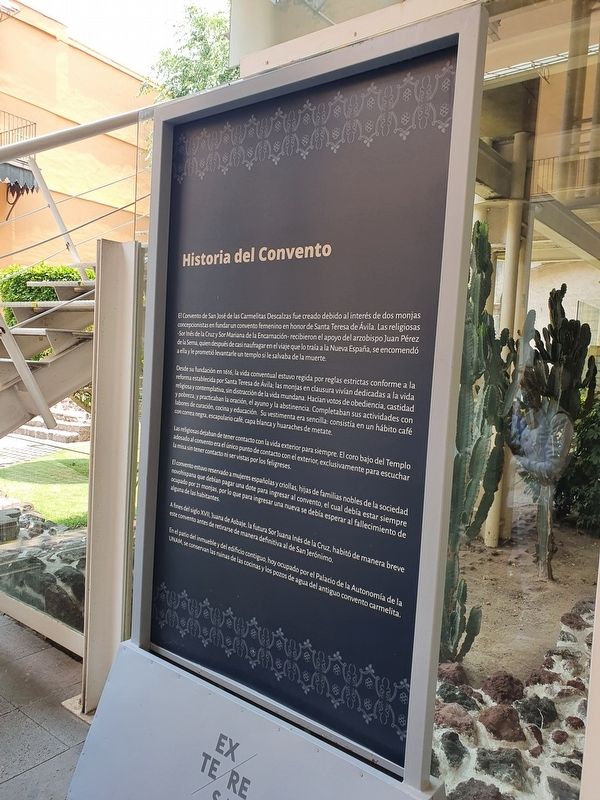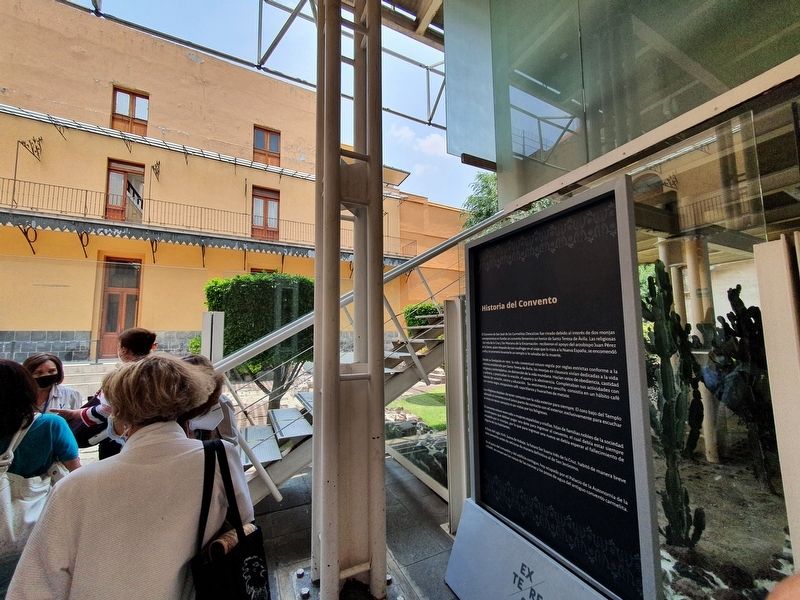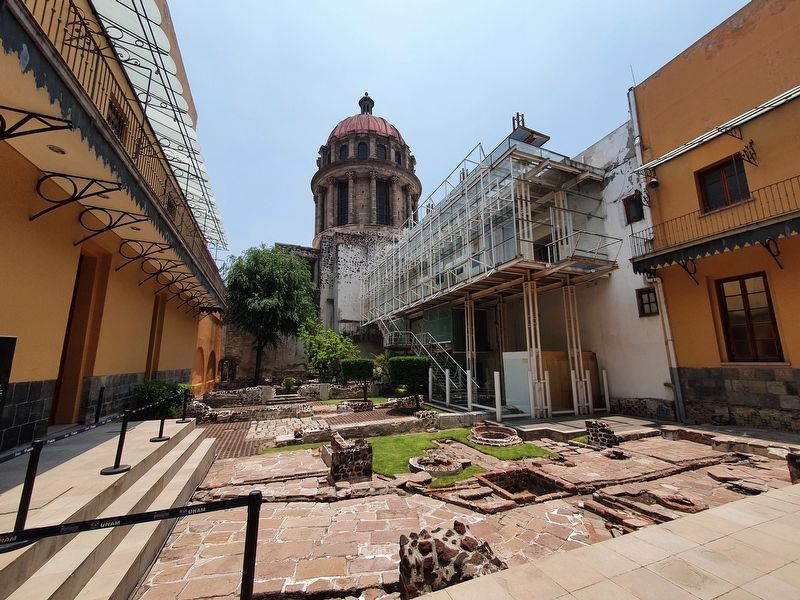Centro Histórico in Ciudad de México, Mexico — The Valley of Mexico (The Central Highlands)
History of the Convent
El Convento de San José de las Carmelitas Descalzas fue creado debido al interés de dos monjas concepcionistas en fundar un convento femenino en honor de Santa Teresa de Ávila. Las religiosas - Sor Inés de la Cruz y Sor Mariana de la Encarnación - recibieron el apoyo del arzobispo Juan Pérez de la Serna, quien después de casi naufragar en el viaje que lo traía a la Nueva España, se encomendó a ella y le prometió levantarle un templo si le salvaba de la muerte.
Desde su fundación en 1616, la vida conventual estuvo regida por reglas estrictas conforme a la reforma establecida por Santa Teresa de Ávila; las monjas en clausura vivían dedicadas a la vida religiosa y contemplativa, sin distracción de la vida mundana. Hacían votos de obediencia, castidad y pobreza, y practicaban la oración, el ayuno y la abstinencia. Completaban sus actividades con labores de curación, cocina y educación. Su vestimenta era sencilla: consistía en un hábito café con correa negra, escapulario café, capa blanca y huaraches de metate.
Las religiosas dejaban de tener contacto con la vida exterior para siempre. El coro bajo del Templo adosado al convento era el único punto de contacto con el exterior, exclusivamente para escuchar la misa sin tener contacto ni ser vistas por los feligreses.
El convento estuvo reservado a mujeres españolas y criollas, hijas de familias nobles de la sociedad novohispana que debían pagar una dote para ingresar al convento, el cual debía estar siempre ocupado por 21 monjas, por lo que para ingresar una nueva se debía esperar al fallecimiento de alguna de las habitantes.
A fines del siglo XVII, Juana de Asbaje, la futura Sor Juana Inés de la Cruz, habitó de manera breve este convento antes de retirarse de manera definitiva al de San Jerónimo.
En el patio del inmueble y del edificio contiguo, hoy ocupado por el Palacio de la Autonomía de la UNAM, se conservan las ruinas de las cocinas y los pozos de agua del antiguo convento carmelita.
History of the Convent
The Convent of San José de las Carmelitas Descalzas was created due to the interest of two conceptionist nuns in founding a female convent in honor of Santa Teresa de Ávila. The nuns - Sister Inés de la Cruz and Sister Mariana de la Encarnación - received the support of Archbishop Juan Pérez de la Serna, who after almost being shipwrecked on the trip that brought him to New Spain, entrusted himself to her and promised to build a temple if she would save him from death.
Since its foundation in 1616, conventual life was governed by strict rules in accordance with the reform established by Saint Teresa of Avila; the cloistered nuns lived dedicated to religious and contemplative life, without distraction from worldly life. They took vows of obedience, chastity, and poverty, and practiced prayer, fasting, and abstinence. They completed their activities with healing, cooking and education. His dress was simple: it consisted of a brown habit with a strip of black, brown scapular, white cape and sandals made of fibers (huaraches).
The nuns ceased to have contact with outside life forever. The low choir of the Temple attached to the convent was the only point of contact with the outside, exclusively to listen to the Mass without having contact or being seen by the parishioners.
The convent was reserved for Spanish and Creole women, daughters of noble families of the New Spanish society who had to pay a dowry to enter the convent, which had to be always occupied by 21 nuns, so to enter a new one had to wait for the death of one of the inhabitants.
At the end of the seventeenth century, Juana de Asbaje, the future Sor Juana Inés de la Cruz, briefly inhabited this convent before retiring definitively to that of San Jerónimo.
In the courtyard and
the adjoining building, today occupied by the Palace of Autonomy of the UNAM, the ruins of the kitchens and the water deposits of the ancient Carmelite convent can be appreciated.
Topics. This historical marker is listed in these topic lists: Churches & Religion • Colonial Era • Women. A significant historical year for this entry is 1616.
Location. 19° 26.051′ N, 99° 7.829′ W. Marker is in Ciudad de México. It is in Centro Histórico. Marker can be reached from Licenciado Verdad just north of Moneda, on the right when traveling north. Touch for map. Marker is at or near this postal address: Lic Verdad 8, Ciudad de México 06000, Mexico. Touch for directions.
Other nearby markers. At least 8 other markers are within walking distance of this marker. Ex Teresa Arte Actual (within shouting distance of this marker); Palacio de la Autonomía (within shouting distance of this marker); Baroque Entryway (within shouting distance of this marker); Templo Mayor Museum (within shouting distance of this marker); Manuel Nicolás Carpancho (within shouting distance of this marker); The First Printing Press in the Americas (within shouting distance of this marker); Colonial Arch and Platform from Phase V (about 90 meters away, measured in a direct line); Eastern Border of the Sacred Center (about 90 meters away). Touch for a list and map of all markers in Ciudad de México.
Credits. This page was last revised on February 7, 2023. It was originally submitted on September 29, 2022, by J. Makali Bruton of Accra, Ghana. This page has been viewed 69 times since then and 12 times this year. Photos: 1, 2, 3. submitted on September 29, 2022, by J. Makali Bruton of Accra, Ghana.


